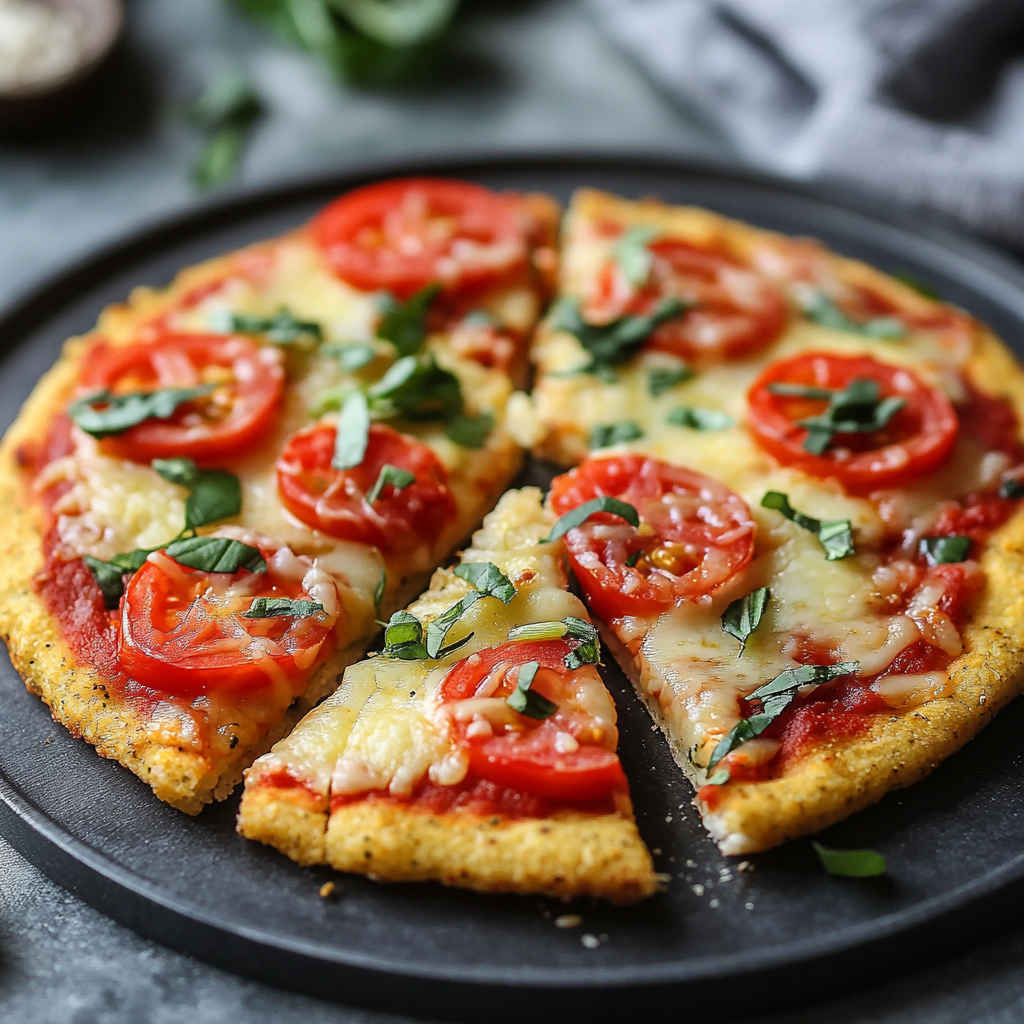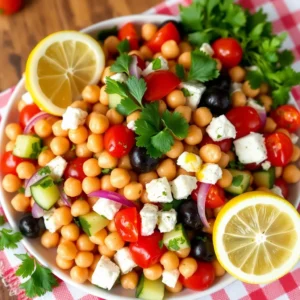There’s something magical that happens when you transform a humble head of cauliflower into a platter of golden, crispy roasted cauliflower. The edges caramelize and crisp up beautifully, while the interior becomes tender and infused with flavor. As someone who’s always looking for ways to make vegetables more exciting, I’ve spent years perfecting this roasted cauliflower recipe, and I’m thrilled to share it with you today!
When my kids were younger and turning their noses up at most vegetables, this roasted cauliflower recipe became my secret weapon. There’s something about the crispy texture and nutty flavor that turns even the most stubborn veggie-avoiders into enthusiastic cauliflower fans. Whether you’re trying to add more plant-based options to your menu or simply looking for a delicious side dish that doesn’t require hours in the kitchen, this recipe deserves a spot in your regular rotation.
Why You’ll Love This Roasted Cauliflower
Let’s be honest – plain steamed cauliflower can be, well, a bit boring. But roasted cauliflower? That’s a whole different story! When cauliflower gets the roasting treatment, it transforms into something so delicious you might find yourself eating it straight from the baking sheet (I certainly do!).
What makes this particular roasted cauliflower recipe special is the perfect balance of simplicity and flavor. With just a handful of pantry staples, you can create a dish that’s impressive enough for company but easy enough for a Tuesday night dinner. The smoked paprika adds a subtle depth, while the high-heat roasting method ensures those coveted crispy edges that make roasted vegetables so irresistible.
Plus, it’s incredibly versatile. You can serve it as a side dish, toss it into salads, fold it into grain bowls, or even use it as a base for a meatless main. And did I mention it’s naturally gluten-free, low-carb, and packed with nutrients? That’s what I call a winning combination!
What Makes Cauliflower a Kitchen Superstar
Before we dive into the recipe, let’s take a moment to appreciate just how amazing cauliflower truly is. This versatile vegetable has been enjoying its well-deserved moment in the spotlight for the past few years, and for good reason!
Cauliflower is incredibly nutritious – it’s loaded with vitamin C, vitamin K, and fiber, while remaining low in calories and carbohydrates. It’s the perfect vegetable for those looking to add more nutrient-dense foods to their diet without sacrificing flavor.
What really sets cauliflower apart is its chameleon-like ability to take on different forms. From cauliflower rice to cauliflower pizza crust to cauliflower “wings,” this vegetable can do it all. But sometimes, the simplest preparation – like this classic roasted cauliflower – is the most satisfying.
Ingredients for Perfect Roasted Cauliflower
One of the things I love most about this recipe is that it requires minimal ingredients, most of which you probably already have in your pantry. Here’s what you’ll need to serve 4 people:
- 1 medium head of cauliflower (look for one that’s fresh and firm, with bright green leaves)
- 2 tablespoons high-quality olive oil (trust me, using a good olive oil makes a difference!)
- 1 teaspoon garlic powder (or fresh minced garlic if you prefer a bolder flavor)
- 1/2 teaspoon smoked paprika (this adds a wonderful subtle smokiness)
- 1/2 teaspoon fine sea salt (adjust to your taste preferences)
- 1/2 teaspoon freshly ground black pepper
- 1 tablespoon cornstarch (optional, but helps create extra crispy edges)
- 1/4 cup fresh parsley, finely chopped (for garnish)
- 1 tablespoon lemon zest or a squeeze of fresh lemon juice (optional, for brightness)
How to Make the Best Roasted Cauliflower
Now, let’s break down the process step by step. Don’t worry – it’s much easier than you might think!
Step 1: Prep Your Cauliflower
First things first, let’s get your cauliflower ready for its transformation:
- Preheat your oven to 400°F (200°C). This high heat is crucial for achieving those beautiful golden edges.
- Wash your cauliflower thoroughly under cool running water. You’d be surprised how much dirt can hide between those florets!
- Pat the cauliflower dry with a clean kitchen towel or paper towels. This step is important – excess moisture will steam your cauliflower rather than roast it, and we’re after that crispy texture.
- Using a sharp knife, cut the cauliflower into bite-sized florets. Try to make them relatively uniform in size so they cook evenly. Don’t throw away the stem – it’s perfectly edible and adds a nice textural contrast when chopped into pieces.
Here’s a little tip from my kitchen to yours: If you leave some of the smaller leaves attached to the florets, they’ll crisp up beautifully in the oven, adding another dimension of texture and flavor. It’s one of those happy accidents I discovered years ago that’s now a deliberate part of my preparation!
Step 2: Season to Perfection
Now for the fun part – seasoning your cauliflower:
- In a large mixing bowl, combine the olive oil, garlic powder, smoked paprika, sea salt, and black pepper. Give it a good whisk until everything is well blended and aromatic.
- Add your cauliflower florets to the bowl and toss them gently until they’re evenly coated with the seasoning mixture. Take your time with this step – you want every piece to be well-dressed in that flavorful oil.
- If you’re using the cornstarch (which I recommend for extra crispiness), sprinkle it over the seasoned florets and toss again until evenly distributed.
The beauty of this basic seasoning is that it creates a perfect foundation that complements cauliflower’s natural flavor. But don’t be afraid to experiment! Sometimes I add a pinch of cumin or turmeric for an extra layer of warmth and a beautiful golden color. Other times, a sprinkle of nutritional yeast creates a subtle cheesy flavor that’s absolutely delicious.
Step 3: Roast to Golden Perfection
Now it’s time to transform your seasoned cauliflower into crispy, golden goodness:
- Line a baking sheet with parchment paper or a silicone baking mat. This prevents sticking and makes cleanup a breeze – and who doesn’t love that?
- Spread your seasoned cauliflower florets in a single layer on the prepared baking sheet. This is crucial – overcrowding the pan will cause the cauliflower to steam rather than roast, and you’ll miss out on those delicious crispy edges.
- Place the baking sheet in your preheated oven and roast for 25-30 minutes. About halfway through the cooking time, gently toss the florets to ensure they brown evenly on all sides.
Here’s a little secret for taking your roasted cauliflower from good to great: during the last 10 minutes of roasting, drizzle a teaspoon of olive oil over the florets. This enhances their golden color and crispiness, creating that restaurant-quality finish we’re all after.
You’ll know your cauliflower is ready when it’s tender on the inside and beautifully caramelized on the outside, with those irresistible crispy edges that make roasted vegetables so addictive.
Step 4: Garnish and Serve
The final touch is all about adding freshness and visual appeal:
- Transfer your perfectly roasted cauliflower to a serving platter – or, if you’re like me on busy weeknights, straight onto dinner plates!
- Sprinkle with freshly chopped parsley for a burst of color and fresh flavor. If you’re using lemon zest or a squeeze of lemon juice, add it now for a bright, zesty finish that balances the richness of the roasted vegetable.
When I’m hosting friends or family, I sometimes add an extra special touch – a sprinkle of toasted sesame seeds or a drizzle of tahini creates a nutty, Middle Eastern-inspired flair that always earns compliments.
Expert Tips for Roasted Cauliflower Success
After years of making roasted cauliflower for weeknight dinners and special occasions alike, I’ve picked up a few tricks that make all the difference:
Tip #1: Don’t Rush the Prep Work
Take your time cutting the cauliflower into evenly-sized florets. If some pieces are tiny and others are huge, you’ll end up with burnt bits and undercooked chunks. And remember – drying your cauliflower thoroughly is non-negotiable if you want those crispy edges!
Tip #2: Give Them Space
Spreading your cauliflower in a single layer with a bit of breathing room between pieces is crucial. If your baking sheet is overcrowded, your cauliflower will steam instead of roast. When in doubt, use two baking sheets rather than cramming everything onto one.
Tip #3: Embrace the Char
Don’t panic if some edges get quite dark – those caramelized bits are flavor gold! In fact, I sometimes leave mine in a few extra minutes because we love those super crispy edges. If you notice a floret or two with a blackened spot, don’t worry – that’s not a cooking fail, it’s character! As I always tell my kitchen-nervous friends, “A little char never hurt anybody’s cauliflower!”
Tip #4: Season After Tasting
While the recipe provides specific measurements for seasonings, always taste and adjust before serving. Sometimes a pinch more salt or an extra squeeze of lemon juice is all you need to make the flavors sing.
Tip #5: Make Extra
Trust me on this one – you’ll want leftovers. Cold roasted cauliflower makes an incredible addition to salads the next day, and it reheats beautifully for quick lunches.
From My Kitchen to Yours: A Personal Note
The first time I served this roasted cauliflower recipe at a family gathering, my brother-in-law (the self-proclaimed vegetable hater) took a polite, tiny portion to be nice. Twenty minutes later, he was hovering around the serving dish, snagging the last few pieces when he thought nobody was looking! Now it’s his requested contribution whenever they host holiday meals.
What I love most about this dish is how it transforms something ordinary into something special without requiring fancy ingredients or complicated techniques. On busy weeknights when I’m tempted to phone in dinner, this roasted cauliflower recipe reminds me that sometimes the simplest foods, prepared with a little care and attention, can be the most satisfying.
My youngest son, who went through a notorious picky-eating phase, once asked me why the “white trees” tasted so much better at our house than at his friend’s house. That’s when I knew I had a winning recipe that would stand the test of time!
Variation Ideas for Your Roasted Cauliflower
While the classic version is delicious, don’t be afraid to experiment with different flavor profiles:
Spicy Roasted Cauliflower
Add a pinch of cayenne pepper or red pepper flakes to the seasoning mix for a fiery kick. This version pairs beautifully with cooling dips like yogurt sauce or ranch dressing.
Cheesy Roasted Cauliflower
After roasting, sprinkle grated Parmesan or your favorite cheese over the hot cauliflower and return to the oven for 2-3 minutes until melted and bubbly. For a dairy-free option, nutritional yeast creates a surprisingly cheese-like flavor.
Herb-Infused Roasted Cauliflower
Experiment with fresh herbs like thyme, rosemary, or dill for a fragrant twist. Simply add them to the seasoning mix before roasting, or sprinkle fresh herbs over the finished dish.
Mediterranean-Style Roasted Cauliflower
Serve your roasted cauliflower with a side of hummus, tzatziki, or a tahini-based dip for a Mediterranean-inspired meal. A sprinkle of za’atar spice blend before roasting adds an authentic touch.
Frequently Asked Questions About Roasted Cauliflower
Can I make roasted cauliflower ahead of time?
Absolutely! While roasted cauliflower is at its crispiest when freshly made, you can prep everything in advance to streamline the cooking process. Wash and cut the cauliflower up to three days ahead, and store it in an airtight container in the refrigerator. You can also mix the seasonings ahead of time. When you’re ready to cook, simply toss everything together and roast. If you need to fully prepare it ahead of time, reheat it in a 350°F oven for about 10 minutes to restore some of the crispiness.
How do I store leftover roasted cauliflower?
Leftover roasted cauliflower can be stored in an airtight container in the refrigerator for up to 3 days. To reheat, avoid the microwave (which will make it soggy). Instead, spread it on a baking sheet and warm it in a 350°F oven for 8-10 minutes, or toss it in a skillet over medium heat until warmed through. The texture won’t be quite as crispy as fresh, but the flavor will still be delicious!
Can I freeze roasted cauliflower?
While you technically can freeze roasted cauliflower, I don’t recommend it if you’re looking to maintain its texture. Freezing causes the cell walls to break down, resulting in a softer consistency when thawed. However, frozen roasted cauliflower works perfectly fine in soups, casseroles, or cauliflower mash where the textural change won’t be noticeable.
Creative Ways to Serve Your Roasted Cauliflower
This versatile dish can be enjoyed in so many ways beyond a simple side:
Build a Nourishing Grain Bowl
Use roasted cauliflower as the star of a hearty grain bowl. Start with a base of quinoa or brown rice, add your golden cauliflower, toss in some chickpeas or your protein of choice, and finish with a drizzle of tahini sauce or vinaigrette.
Create a Satisfying Wrap
Tuck roasted cauliflower into whole-grain wraps or pita bread along with hummus, fresh greens, and a dollop of yogurt sauce for a quick and satisfying lunch option.
Elevate Your Pasta Game
Toss roasted cauliflower with your favorite pasta, good olive oil, and a sprinkle of Parmesan or nutritional yeast for a simple yet satisfying meal. A handful of toasted pine nuts adds wonderful texture!
Build a Show-Stopping Salad
Mix warm or chilled roasted cauliflower with leafy greens, roasted nuts, and a light vinaigrette for a hearty salad that works as a main dish or side.
Serve as an Impressive Appetizer
Arrange your roasted cauliflower on a platter alongside dips like hummus, baba ganoush, or tzatziki for a crowd-pleasing appetizer that’s as nutritious as it is delicious.
A Word About Nutrition
It’s worth mentioning that beyond being delicious, roasted cauliflower is incredibly good for you. It’s packed with vitamins C and K, fiber, and antioxidants, while remaining low in calories and carbohydrates. For those following specific dietary patterns, it’s naturally gluten-free, vegan (just skip any cheese toppings), paleo-friendly, and keto-compatible.
I love serving this roasted cauliflower to my family knowing that behind the delicious flavor is a powerhouse of nutrition that supports overall health and wellbeing. It’s one of those rare dishes where “healthy” and “crave-worthy” perfectly overlap!
Bringing It All Together
There’s something deeply satisfying about transforming a humble head of cauliflower into a dish that draws everyone to the table. Whether you’re serving it alongside your favorite protein, incorporating it into grain bowls, or enjoying it as a nutritious snack, this roasted cauliflower recipe delivers on both flavor and simplicity.
What makes this dish special is that it doesn’t require fancy ingredients or professional culinary skills – just a few quality ingredients and a little attention to detail. It’s the kind of recipe that becomes a staple in your kitchen repertoire, one you’ll return to again and again when you want something delicious without a lot of fuss.
So the next time you spot a beautiful head of cauliflower at the market, remember this roasted cauliflower recipe. With just a few simple steps, you can transform this ordinary vegetable into something extraordinary that your family and friends will request again and again. From my kitchen to yours, enjoy!
Delicious Pairings for Your Roasted Cauliflower
Looking for inspiration on what to serve with your roasted cauliflower? Here are some perfectly complementary dishes:
For a complete meal, pair it with this juicy baked chicken breast that’s just as easy to prepare and can roast in the oven alongside your cauliflower.
If you’re creating a vegetarian feast, add these crispy smashed potatoes to your menu for a delightful contrast of textures.
For more information about the nutritional benefits of cauliflower, check out this comprehensive guide from Harvard T.H. Chan School of Public Health.



